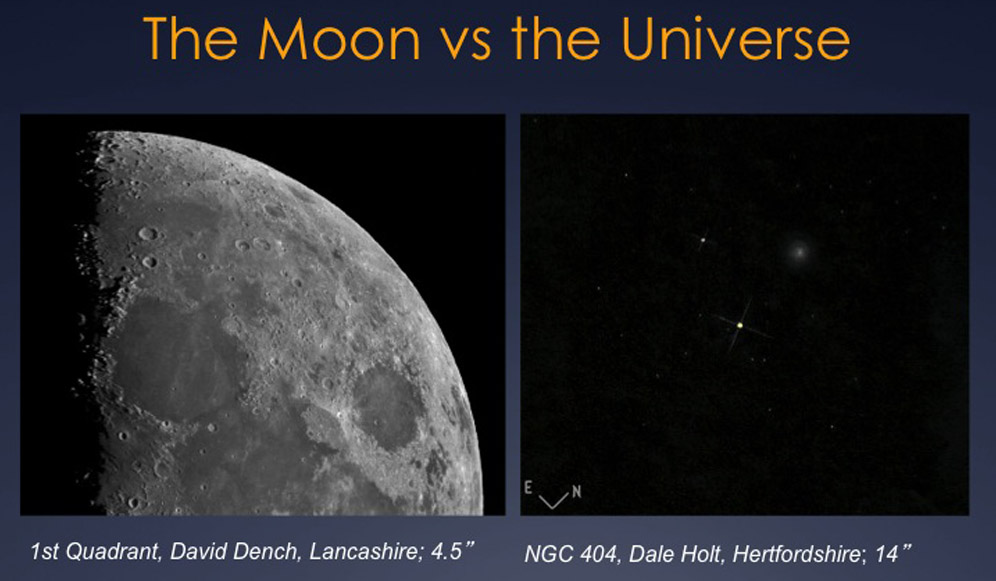August 16, 2014
The Moon Wins

This is from a PowerPoint slide I often use when giving talks about the Moon. It shows that with a small telescope the Moon provides thousands of individual features to observe, whereas even a relatively large amateur telescope used visually shows only small smudges for many deep sky objects. This has come home to me very clearly in the last week or so since I received a new telescope, a 6" Celestron Evolution. This is a pretty remarkable telescope that has good optics, excellent ergonomic design, and control either via hand control or smartphone. I have never had a goto mount before, so every night recently I have been visiting many dozens of cosmic features, more than I have probably every seen before. This is because - I am embarrassed to admit - I never learned to find more than a handful of features by star-hopping. Thus, most of my observing over the last 50 years has been limited to the Moon and planets, partially because I could find them. But now having looked at many objects outside the solar system I want to say how disappointing much of the universe is. Double stars are probably the highlight of my observing because they are bright and their colors are often beautiful. Globular clusters are paler than I remember them being, and many look boringly similar. My biggest disappointment is galaxies. Even famous ones like M51 are hard to see, and most others I can't even glimpse. My observing site is in a small town and limiting magnitude is only 3.5 or 4, although through the telescope, obviously, many more stars appear. Perhaps, even though my visual acuity is still very good, my eyes have loss sensitivity. But also, since I observed galaxies and clusters and nebulae 50 some years ago, I have seen tens of thousands of images taken by the Hubble Space Telescope and long exposures by amateurs, all of which depict a universe that doesn't exist to an eye at the eyepiece. Perhaps the disappointment of visual observing of the universe is why imaging is so widespread. Even a cheap video camera reveals so much more than the eye can see, so the image on the computer screen is closer to what we seen in magazines and web sites. All of this reminds me once again that the Moon is really the most fascinating place in the night sky.
Chuck Wood
Note: I do admit that roaming thru Cygnus with binoculars is a wonderful way to enjoy the universe.
And I did observe Mu Cygni, the Garnet Star that Danny Caes admires - it is remarkably garnety.
Technical Details
I can't remember when or where I got these images, but their makers and the instruments used are indicated.
Yesterday's LPOD: Smack
Tomorrow's LPOD: Perpetual Youth
COMMENTS?
Register, Log in, and join in the comments.



